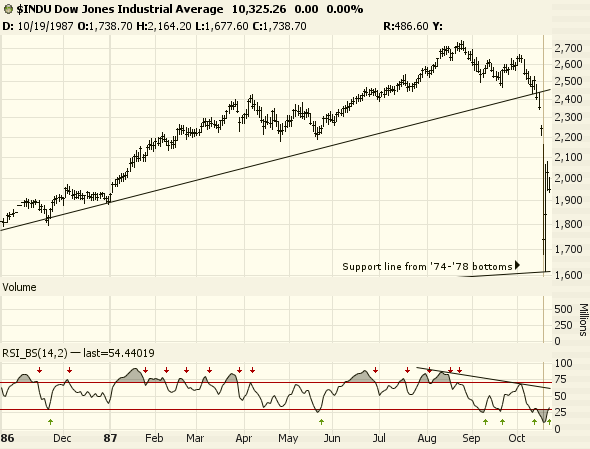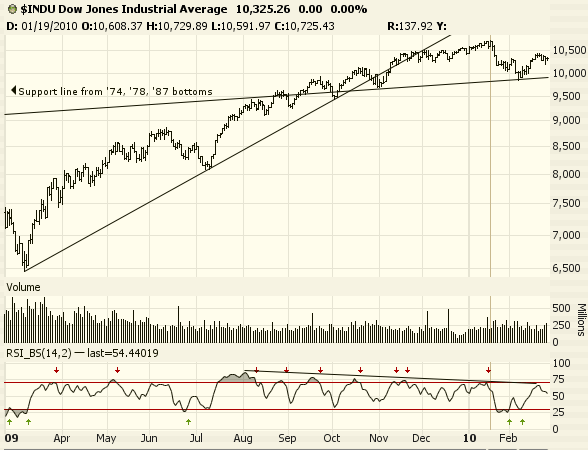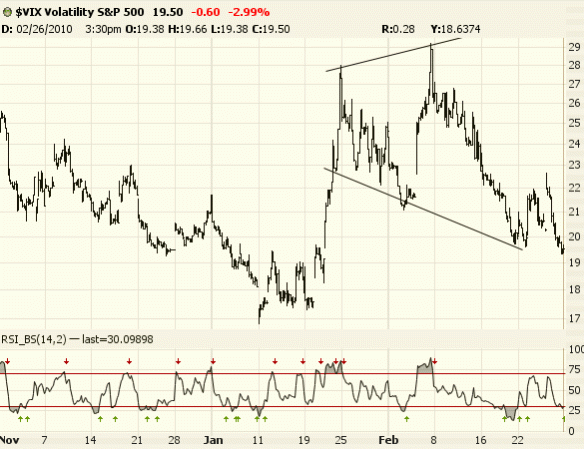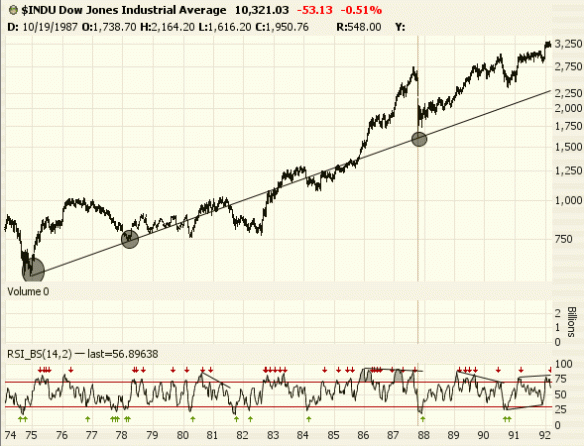A question of Keynes vs. Kondratieff
Until recently, the sovereign debt of nearly all governments would rally during panic episodes as stocks and commodities fell. This makes sense, as strong sovereign debt is cash for big boys, and investors are forced to reach further and further out for yield as short-rates are driven to zero or negative. However, starting with Greece, this pattern may change, as bonds are likely putting in a secular top in the 2008-2016 window. Their last bottom of course was the early 1980s, and their last top was 1946-47. The indebtedness and unabashed Keynesianism of all of the world’s governments seem to virtually guarantee higher interest rates in the coming years, even though US, German and Japanese bonds are still finding a bid during panics.
We have already seen the beginnings of this development in municipal bonds and the crappiest sovereign debt, but the market may slowly realize that it is all crap, beyond the short-term credit of the strongest governments.
Prechter makes the point in Conquer the Crash that higher rates on risky long-dated sovereign debt are part and parcel of deflation, an increased preference for the safest cash and cash alternatives. Steepening yield curves fit right into that trend. If the long bond sells off hard, this does not mean the end of the dollar, but the opposite. All else being equal, if T-bonds fell with stocks this year, it would just mean that the US government would finally feel the same pinch as everyone else.
Now for the tricky part. We have to keep in mind that interest rates are more than just a mechanical product of fiscal deficits, savings rates and politics. They are a kind of natural social phenomenon, a reflection of forces I can’t fully understand. They are not rational: why were short-term rates in the low single digits during the second world war when the US had just abandoned the gold standard, had a debt:GDP ratio of over 100% and inflation was running at 8-12%? Why were they still double-digit in the mid-1980s when the economy was good and inflation was 3-4%? (For some charts and discussion of the long-term rate cycle, see this post). The only answers that make any sense are that it was time for rates to bottom and then it was time for them to top.
We are certainly entering what *Kondratieff described as winter, when debts are called in and defaulted upon and cash is at a premium. This is associated with low interest rates, reflecting a low demand for credit, provided that the monetary unit retains value, which it tends to do since this unit is how debts are denominated and settled. And with deflation very much a reality, low rates can provide a high real yield so long as the credit is sound. With housing and wages falling by large percentages and every consumer good on sale, what is the real yield on a 10-year note priced at 3.6%?
There is no telling how long rates will stay low or how low they will go. See Japan, 1990-

Those are the market rates on the credit of a horribly indebted nation with terrible demographics that has been trying to spend its way out of recession for 20 years. Is there a better way to explain this than Kondratieff winter?
If social forces demand that governments start to shift towards frugality and default like the rest of society (and government is a reflection of social mood), this would be very supportive of the current fiat regimes. Think about it: what would happen to the Euro if Greece defaulted (which is what they should do)? Billions in euro-denominated balances would go “poof” and the remaining euros would be worth more.
What if younger generations of Americans, the ones who most enthusiastically support Ron Paul and even phonies like the new senator from Massachusetts, start to exert pressure for the rolling back of that $70+ trillion in retirement and health-care promises? Those are contracts that the government can’t honor, so by definition, it won’t. It will try to pretend otherwise, but it won’t. In effect, much of the debt will be repudiated.
There are huge caveats to the above, such as radical socialism or expanded warfare, but there are going to be real deflationary undertones to social mood that may effect policy and prolong the current paper regimes for longer than almost anyone suspects. Kondratieff winters are not short episodes, but generational, and if the last two turning points in the interest rate cycle are a guide, there could even be another ten years to the bottom.
That is hard to believe right now, but it is possible if social forces demand default. I can’t gauge the odds very well, but I have to consider this longer-term bull case for treasury bonds and a few strong currencies. Bottom line — history has not been kind to paper money and government bonds in times of crisis, but the nature of deflation may give them a longer life than we have assumed.
If you just can’t wait to short some sovereign debt, try Japan before America. They may be a generation ahead of the west in the rate cycle, and really, how much lower could they go?
*Kondratieff waves in the US (click image to expand):

welling@weeden, 1.23.09
One thing that strikes me in the above chart is how huge the latest wave is compared to the others. At 60 years and running, it is the longest, and prices, rates and stocks have gone up so much more than during any of the previous three. Just out of proportionality, it would be perfectly fitting if rates and prices fell for another 5-10 years.
Here’s a clearer view of the Aaa corporate bond rate from 1919 to 2010:
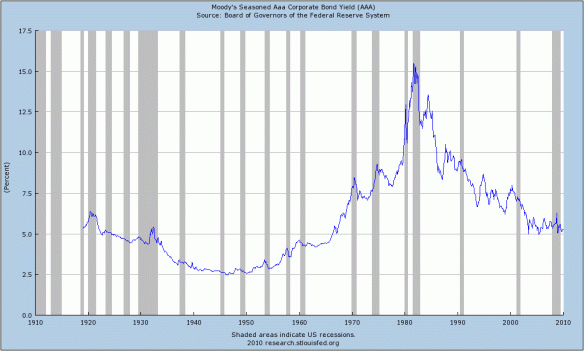
-
Also see Rothbard and then Mish on Kondratieff theory. As Rothbard makes clear, winter is not necessarily an awful time to be alive, judging from the strong economic growth of the 1830s-40s and 1880s-90s. This means that prolonged unemployment and war can’t be blamed merely on the credit cycle, but that fingers must be pointed at the socialists, Keynesians and fascists who’s actions directly brought about the nightmare of 1929-1945.



